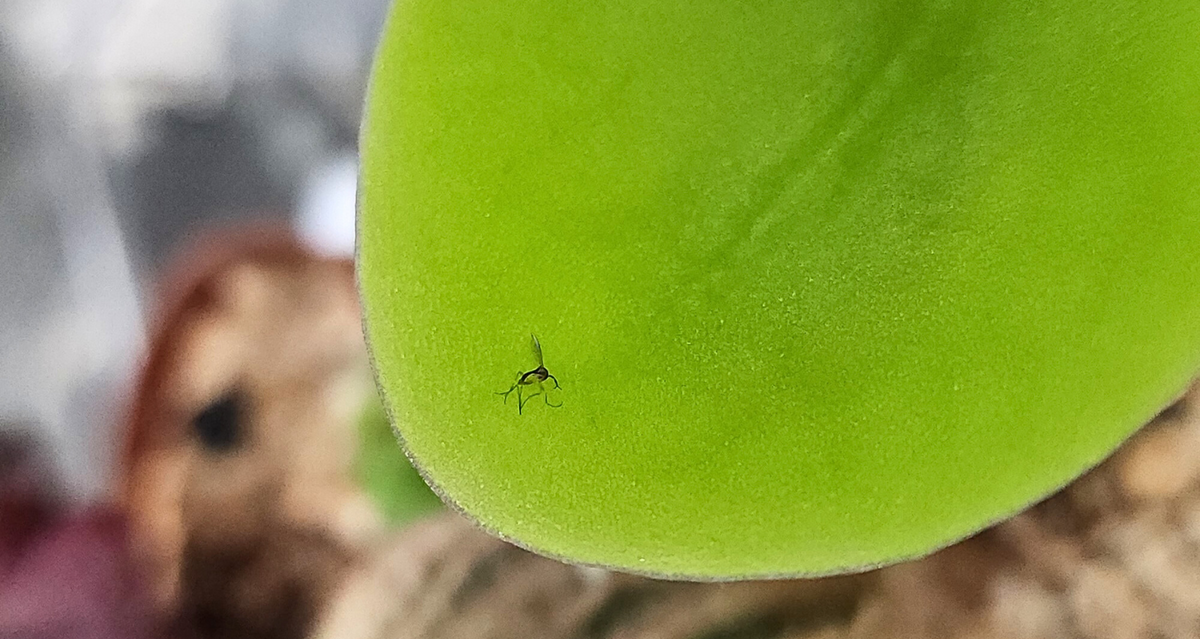
Fungus Gnat Management: How to Control Gnats
|
Time to read 3 min
|
Time to read 3 min
In the realm of tiny insects that can cause big headaches, fungus gnats take center stage. These minuscule creatures, often mistaken for fruit flies, are known for their irritating presence and potential to wreak havoc in our indoor gardens and potted plants.
Luckily, you can use various inexpensive treatments to get rid of and manage these pesky little things.
Often mistaken for fruit flies, fungus gnats (family Sciaridae) are small, delicate flies measuring only about 1/8 to 1/10 inch long. Their distinct preference for damp, organic-rich environments, especially soil and decaying plant matter, sets them apart from fruit flies.
The life cycle of fungus gnats consists of four main stages: egg, larva, pupa, and adult. The adults lay their tiny eggs in moist soil, where the emerging larvae will find an ample food source from decaying plant matter and fungi. During this time, they undergo several molts before entering the pupal stage. The pupae are enclosed in a cocoon-like structure near the soil surface, where they will eventually emerge as adult fungus gnats and start to wreak havoc.
Their presence is most noticeable during the warmer months when their breeding and activity are at their peak.
Though fungus gnats might seem harmless, they can threaten our beloved houseplants and gardens. The larvae's constant feeding on plant roots can lead to stressed, weakened plants, susceptible to other diseases and infestations. Over time, a significant fungus gnat population can compromise the overall health of plants, especially delicate seedlings and young vegetation.
Fortunately, several effective measures can be taken to prevent and control fungus gnat infestations:
Proper Watering: Overwatering creates the ideal breeding ground for fungus gnats. Allow the top layer of soil to dry out between waterings, reducing the moisture that attracts these insects.
Soil Drying Agents: Incorporate sand or perlite into the soil mix to improve drainage and reduce excess moisture.
Good Soil: Good quality components and ratios can help prevent overwatering and increase drainage, helping you control and manage fungus gnats.
Hygiene: Regularly remove decaying plant matter from the soil surface to deprive the larvae of their food source.
Dealing with fungus gnats is no easy task. Their recurring life cycle requires different remedies in every stage for successful treatment. The two main stages that the treatments will focus on are the larvae and adult stages.
Sticky Traps - An extremely well-known and effective way of removing adult fungus gnats. Simply stick these little suckers in your soil and watch the yellow traps become covered in gnats.
Fungus gnats might be small, but their impact on indoor houseplants and gardens can be significant. By understanding their life cycle stages and implementing preventive measures, we can effectively manage and control fungus gnat infestations. With a few simple steps, we can protect our houseplants and enjoy a gnat-free garden year-round.
Birdy's Plants' collection of Premium Soil Mixes has been tested to provide the perfect gnat-free substrate for anyone dealing with fungus gnats or wanting to prevent them indefinitely. Each soil mix has several well-draining components to significantly reduce overwatering issues, increase drainage, and provide better aeration for healthier and stronger plants.
Follow us on Instagram, Tiktok, or Facebook at @birdysplants or subscribe to our newsletter



